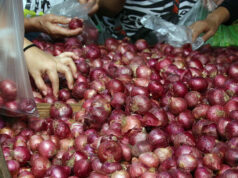THE International Potato Center (CIP) said the sweet potato industry in the Philippines is not pushing out processing technology to the farm level and in many cases has insufficient linkages between the producers and markets.
“There are lot of technologies there. There are organizations with developing technologies, available in the Philippines and elsewhere. But the thing is how it will reach farmers? We are looking at that gap and how we can fill up that gap,” CIP Asia Regional Director Samarendu Mohanty said in an interview on Thursday, on the sidelines of the Opportunities for a Climate-Smart Food System in the Philippines Regional Policy Forum held in the Ortigas district of Pasig City.
“There are different technologies but farmers don’t have any clue,” Mr. Mohanty said.
“We are trying to identify who the trusted agencies are where farmers can get the information,” Mr. Mohanty said.
Mr. Mohanty said when climate change effects are becoming evident, a shift in the planting calendar is necessary. He said sweet potatoes are resilient crops that can survive floods, and are recommended for planting during the rainy season, while the dry season can be devoted to other crops.
“Kamote, or sweet potato, is a very resilient crop. It can survive typhoons and floods. (Farmers are) saying sweet potato can be very profitable. There are farmers who are making millions of pesos selling sweet potato. The problem is when you look at the Philippines, sweet potato production has been declining. It used to be 250,000 hectares in 1980. Now, it’s less than 80,000 hectares,” Mr. Mohanty said.
Mr. Mohanty said that a sweet potato farmer, on average, can earn around P100,000 from one hectare of land in 100 days.
“The best way is for the government to link the farmers to the market. There’s demand. More growth is coming from the processing industry. Farmers are saying they don’t have the linkages to go into processing. If they can get some value-addition, they can also make more money,” according to Mr. Mohanty.
CIP Senior Research Associate Arma Bertuso said that Philippines is not also capable of exporting sweet potatoes due to its low production.
“When we had this round table discussion way back 2016, we also invited companies from the food industry. They said that our supply of kamote is not enough. There is need for kamote but at the same time, because this is an archipelagic country,” Ms. Bertuso said.
“Even if there is plenty of supply in Eastern Visayas, how do you get it to Manila? Who will shoulder the cost?” Ms. Bertuso added.
Mr. Mohanty, on the other hand, said that there is a need to tap local government units (LGUs) to facilitate loan programs and spread information to farmers with regard to processing technology and market linkages.
According to CIP, more than 105 million tons (MT) of sweet potato is produced globally, with 95% produced in developing countries, with the crop considered a valuable source of vitamins A, B, C and E. — Reicelene Joy N. Ignacio



